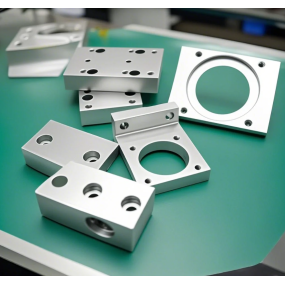In daily life, many stamping parts require precision, delicacy, and precision; What are the processing criteria for precision stamping parts?
1. Precision criteria: The number of processes involved in deep drawing and stamping parts processing is related to material properties, deep drawing height, number of deep drawing steps, as well as deep drawing diameter, material thickness, and other conditions. It needs to be calculated through the deep drawing process before adjustment can be made;
2. Precision criteria: The number of processes involved in the processing of curved stamping parts primarily depends on the degree of disorder in their structural shape, and needs to be determined based on the number, relative direction, and direction of the curved angles;  3. Exquisite principle: When precision stamping parts have high requirements for cross-sectional quality and standard accuracy, it is possible to consider adding a trimming process or selecting a precision punching process for diameter after the punching process;
3. Exquisite principle: When precision stamping parts have high requirements for cross-sectional quality and standard accuracy, it is possible to consider adding a trimming process or selecting a precision punching process for diameter after the punching process;
4. Precision criteria: When punching workpieces with simple shapes, a single process mold can be used to complete the process. However, when punching workpieces with messy shapes, the structure and strength of the mold are limited, and the table should be divided into several parts for punching. Multiple stamping processes should be selected, and continuous molds can be used if necessary.
This article is from EMAR Mold Co., Ltd. For more EMAR related information, please click on www.sjt-ic.com,


 Spanish
Spanish Arabic
Arabic French
French Portuguese
Portuguese Belarusian
Belarusian Japanese
Japanese Russian
Russian Malay
Malay Icelandic
Icelandic Bulgarian
Bulgarian Azerbaijani
Azerbaijani Estonian
Estonian Irish
Irish Polish
Polish Persian
Persian Boolean
Boolean Danish
Danish German
German Filipino
Filipino Finnish
Finnish Korean
Korean Dutch
Dutch Galician
Galician Catalan
Catalan Czech
Czech Croatian
Croatian Latin
Latin Latvian
Latvian Romanian
Romanian Maltese
Maltese Macedonian
Macedonian Norwegian
Norwegian Swedish
Swedish Serbian
Serbian Slovak
Slovak Slovenian
Slovenian Swahili
Swahili Thai
Thai Turkish
Turkish Welsh
Welsh Urdu
Urdu Ukrainian
Ukrainian Greek
Greek Hungarian
Hungarian Italian
Italian Yiddish
Yiddish Indonesian
Indonesian Vietnamese
Vietnamese Haitian Creole
Haitian Creole Spanish Basque
Spanish Basque











